Now normally visiting a railway museum would seem like a dull experience for people who are not railway fans but this museum seemed designed to cater to everyone of every demographic.
One of the reasons is that railways are to Japan how cars are to America. Railways are embedded in the ordinary life in Japan and also in the cultural psyche. If one lives in a large city in Japan, he would most likely take the train to go to work or to go shopping and if he was to do any domestic traveling, he would probably also take the train to get there.
In fact, one of the high speed Shinkansen rail lines in Kyushu was opened on March 12, 2011, one day after the 3/11 earthquake/tsunami disaster, and as a result, all the opening ceremonies were closed and an excellent heartwarming commercial produced to advertise for the Kyushu Shinkansen was not aired on TV. (Its popularity exploded on the Internet and it ended up winning international awards for advertising)
The entrance of the railway museum, because of the ongoing power shortage caused when all nuclear reactors were ordered to be taken offline following the nuclear disaster, the opening hours were cut short to 10 am to 4 pm.

Steam locomotive parked outside the museum.
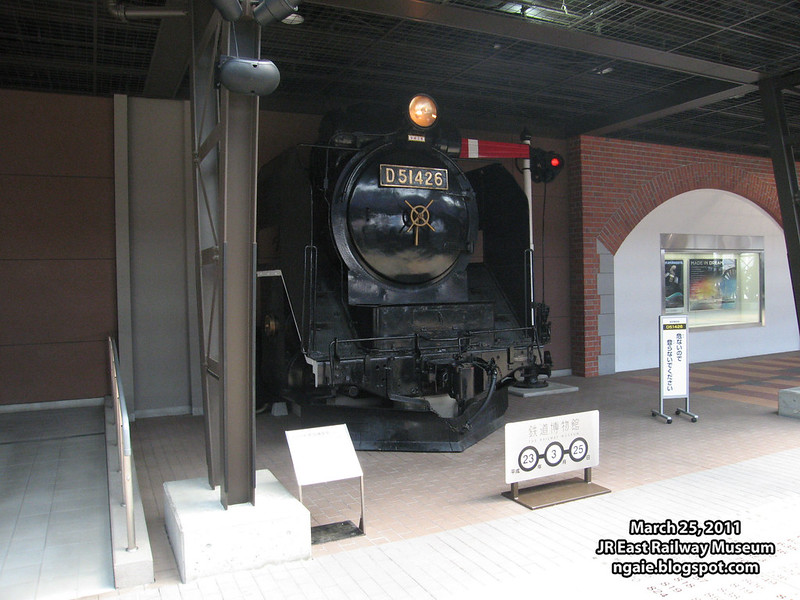
Commemorating the Tohoku Shinkansen extension which extended the line to Shin-Aomori in the northern most part of Honshu.
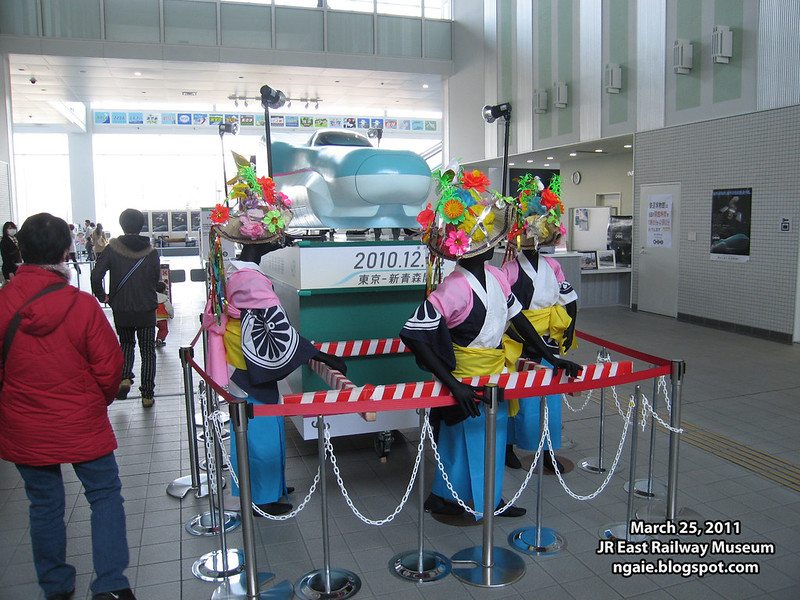
Just like taking the trains in Tokyo, you do not receive any admission ticket upon paying the admission fee, instead you receive a reusable smart card to enter the museum.
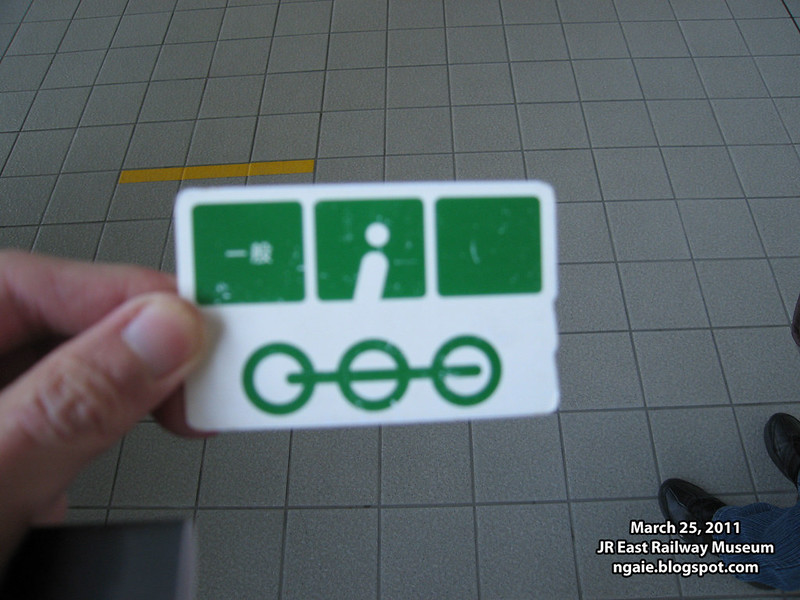
Upon entering the museum, you are greeted by the history of Japan's railways.
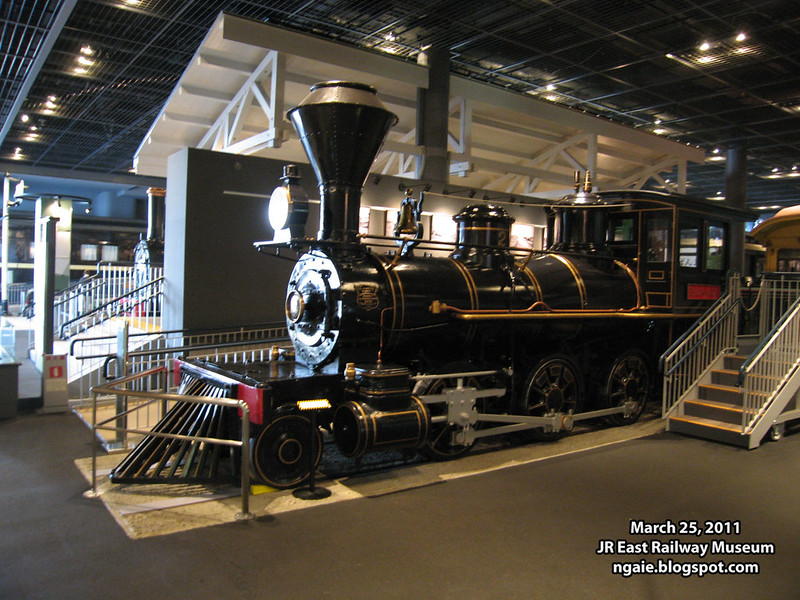
A replica of the station and the historical trains used in the first railway line in Japan which opened in 1872 connecting Shinbashi in Tokyo to Yokohama.
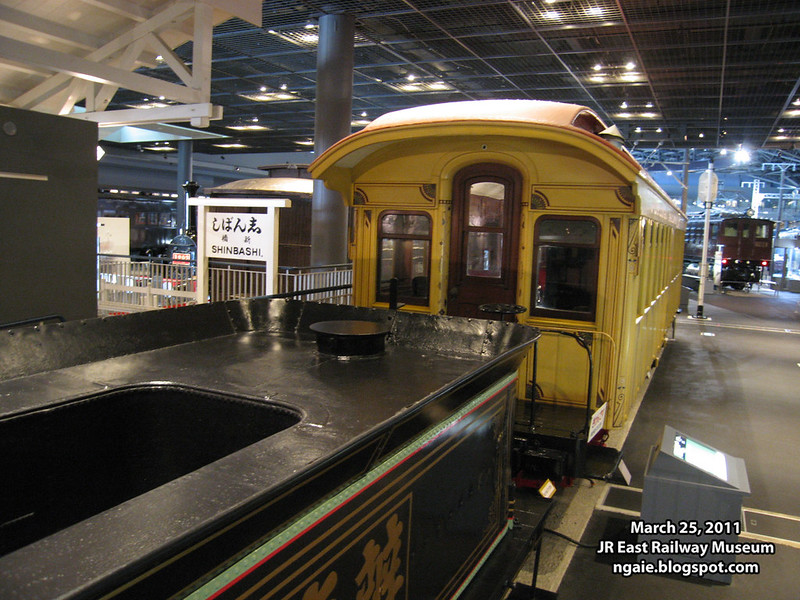
One of the interesting things was a cut out and cross section of a steam locomotive. I never knew how complex this old technology was!
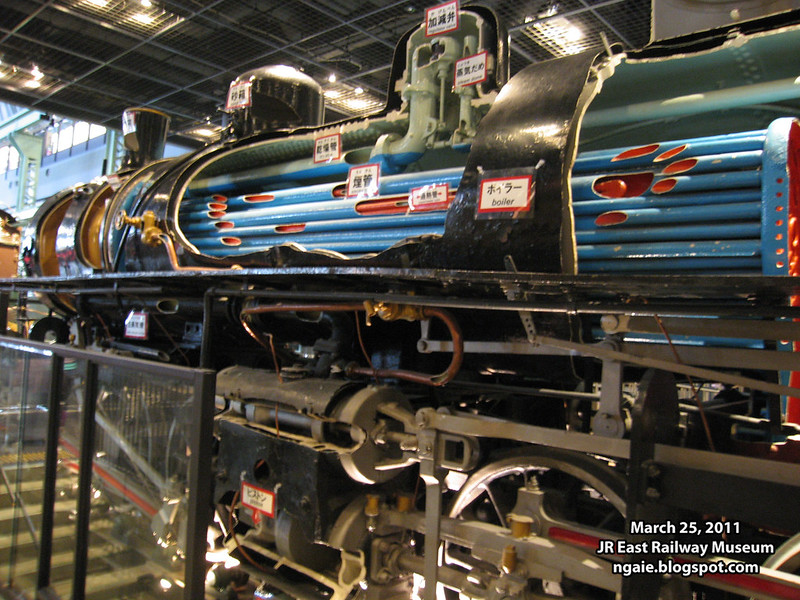
You could even go underneath to see the bottom of the train.

The Emperor's train, naturally it has to be behind glass so that commoners cannot touch it.
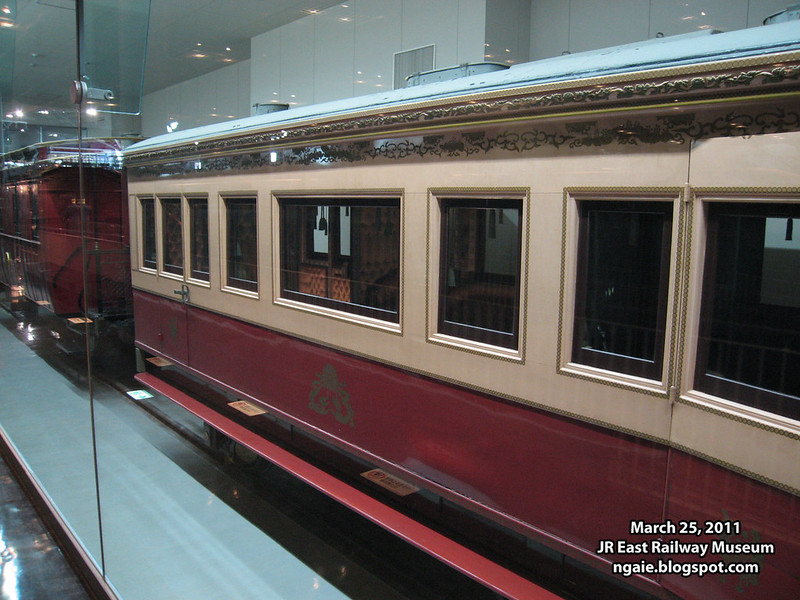

One of the sleeper cars used in the past.
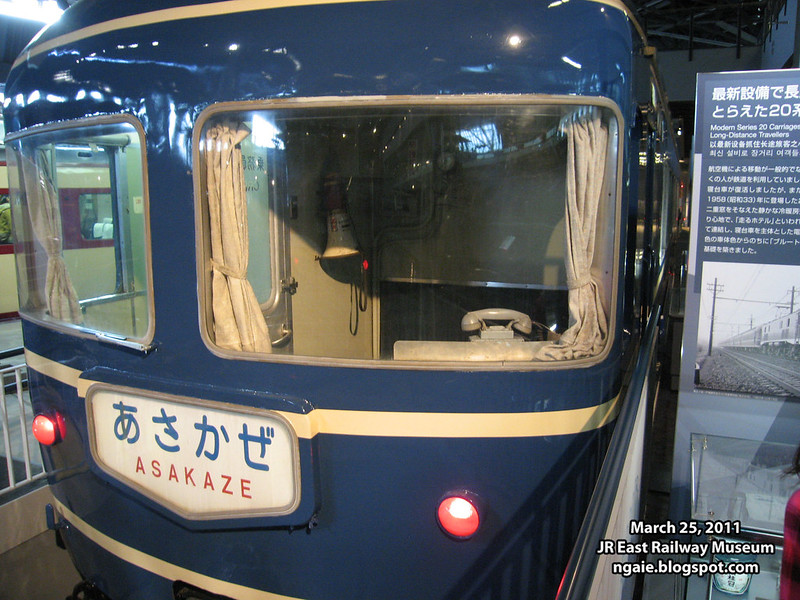
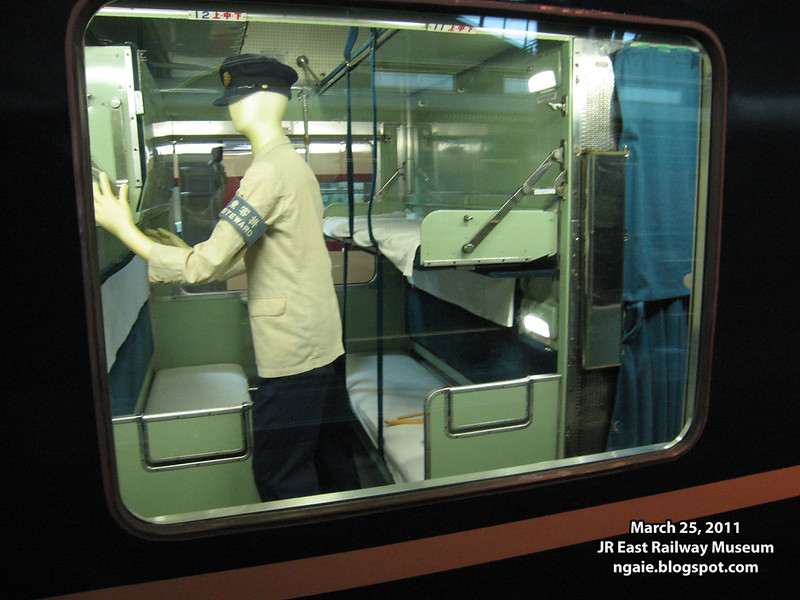
The train used for the Chuo Line in Tokyo in the past.
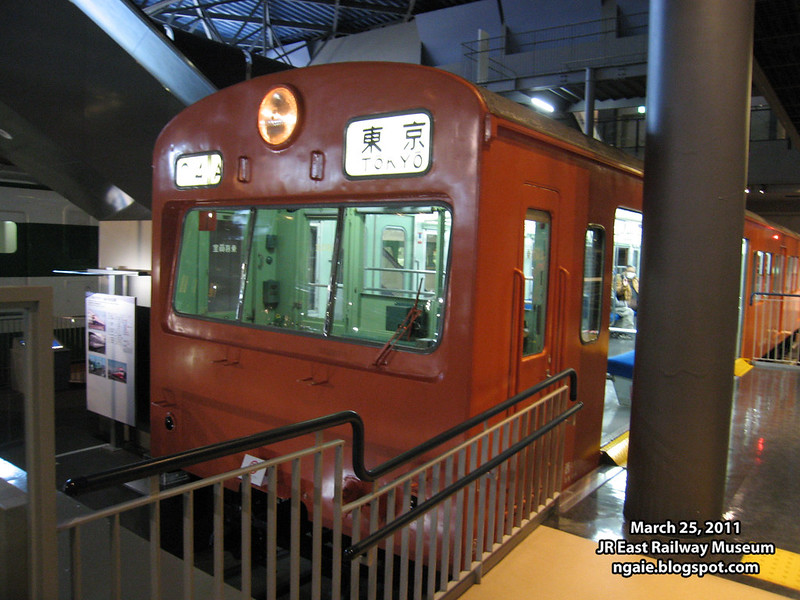
Everything is well preserved including the seats and the maps.
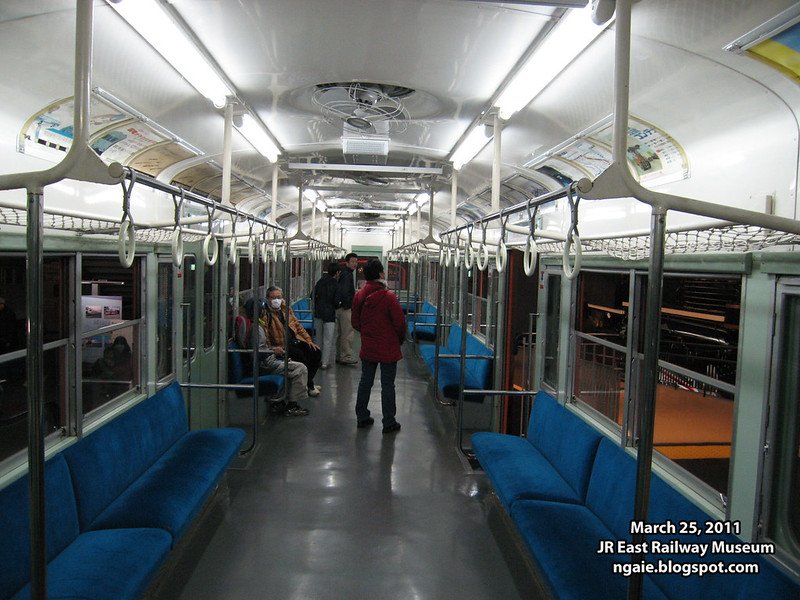

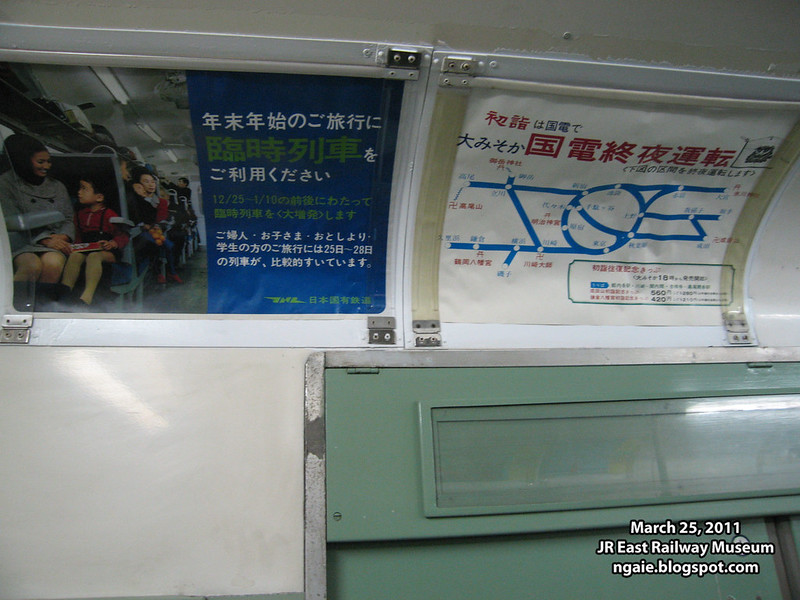
The second generation Shinkansen high speed train.
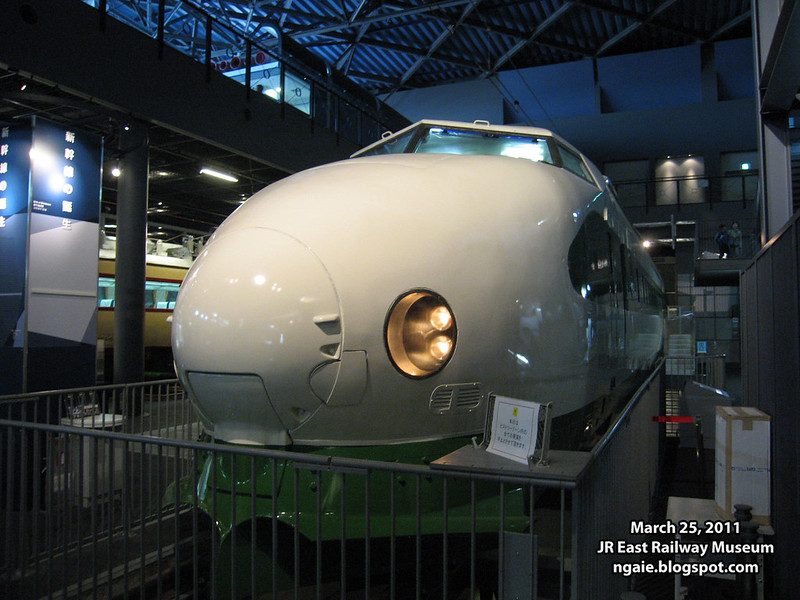
Other trains that were used prior to the introduction of the Shinkansen.
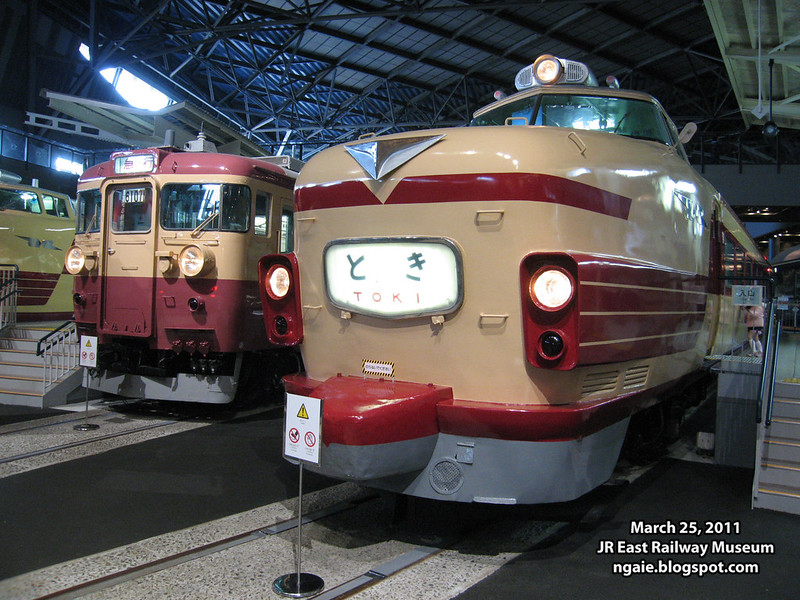
The central area of the museum showcased a train from every era I think.
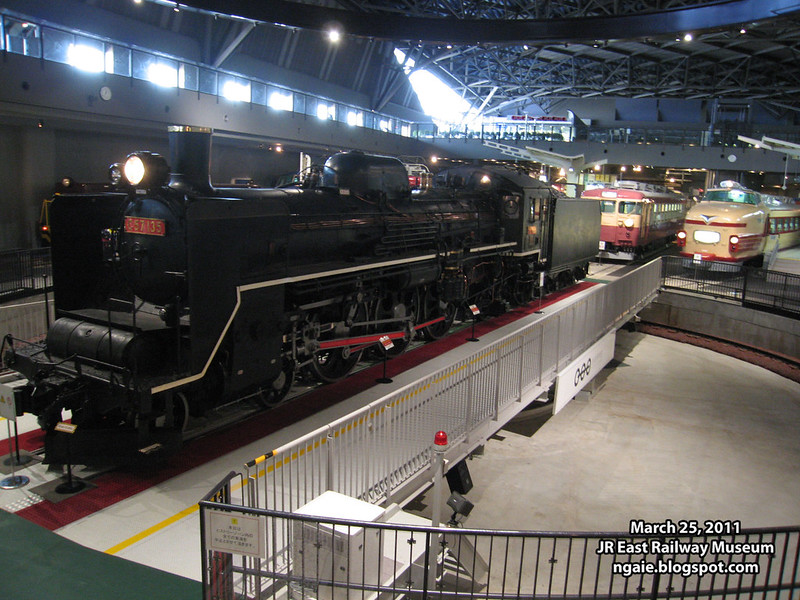
The view from the second floor.
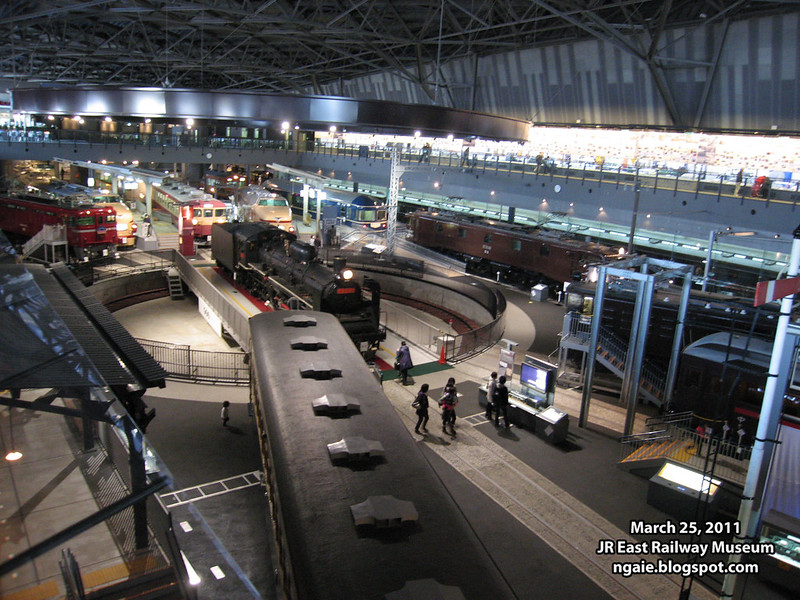
The evolution of the Shinkansen high speed train cars. The bottom one is the first generation which was first operated in 1964.
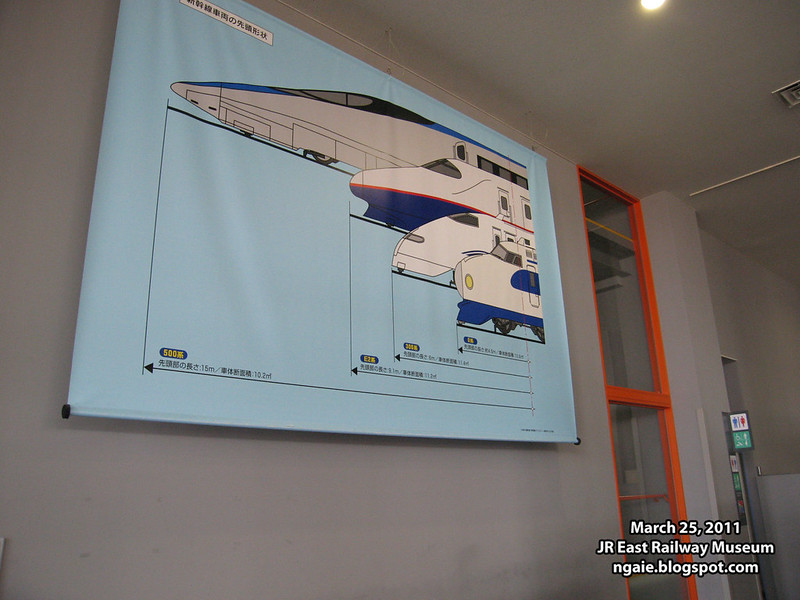
At the museum, there was even a mock railway station called "Teppaku Station" that included real ticketing machines and faregates as used in the real stations. I think this is used for educational purposes for kids?
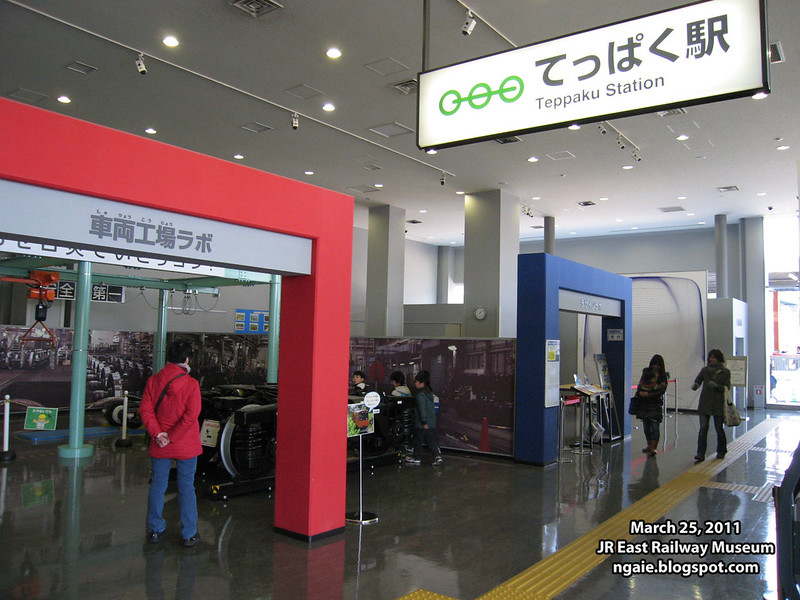
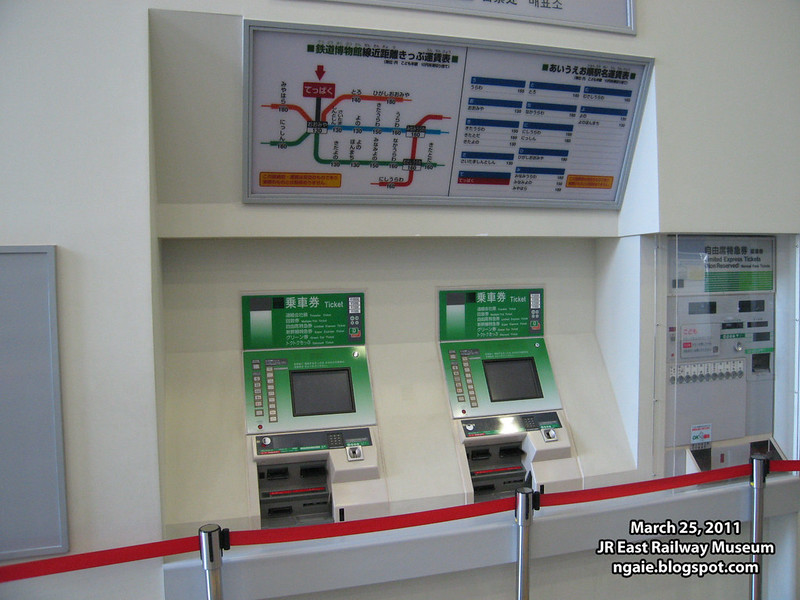
Outside, there was a mini-railway for kids. The most impressive thing was how much effort and detailed they put into building this "attraction".
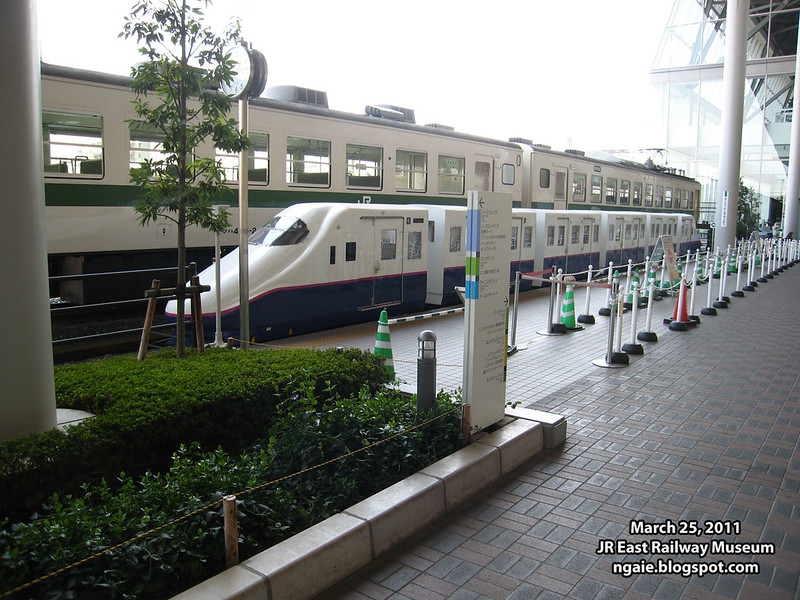
Only a 15 minute wait that day and there weren't many people visiting that day. Can you imagine the lineup when the museum is packed on a holiday?
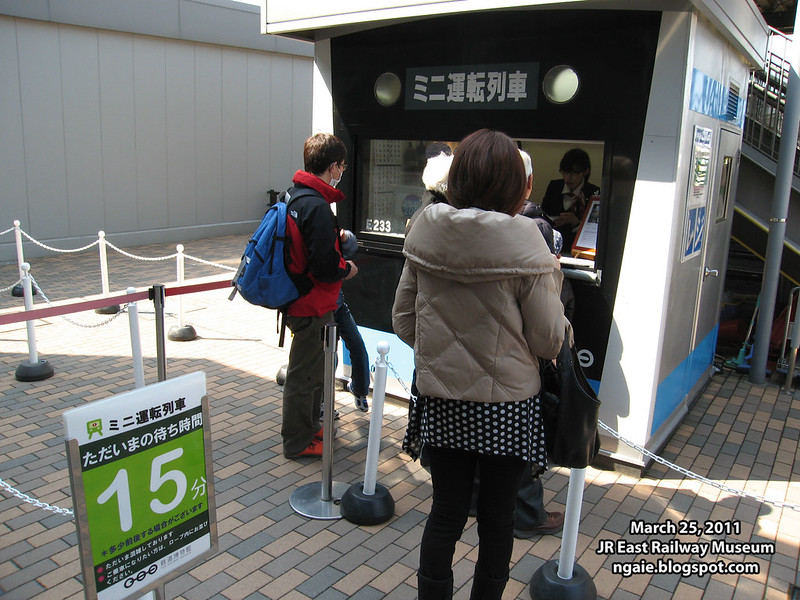
The mini railway course.
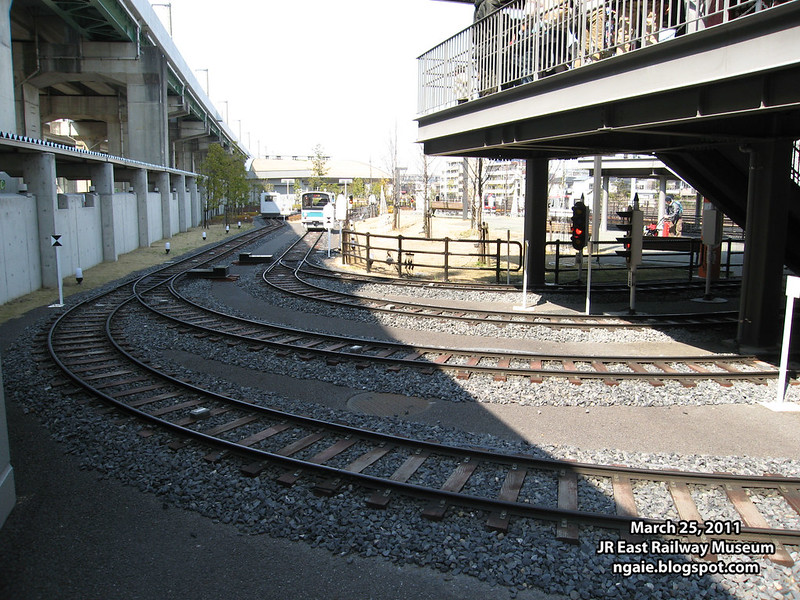
The livery of each mini-train is based on a real train that is used in the Tokyo area, can you identify which train is operated on which real line?
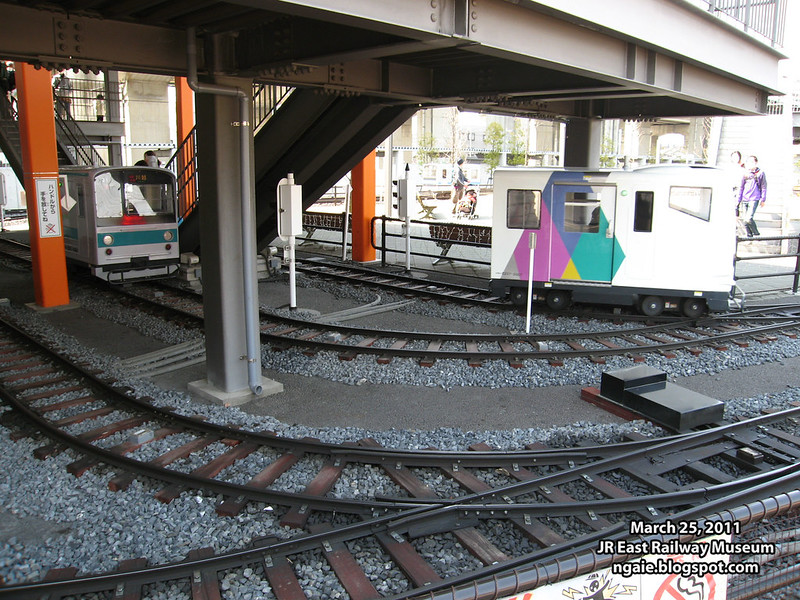
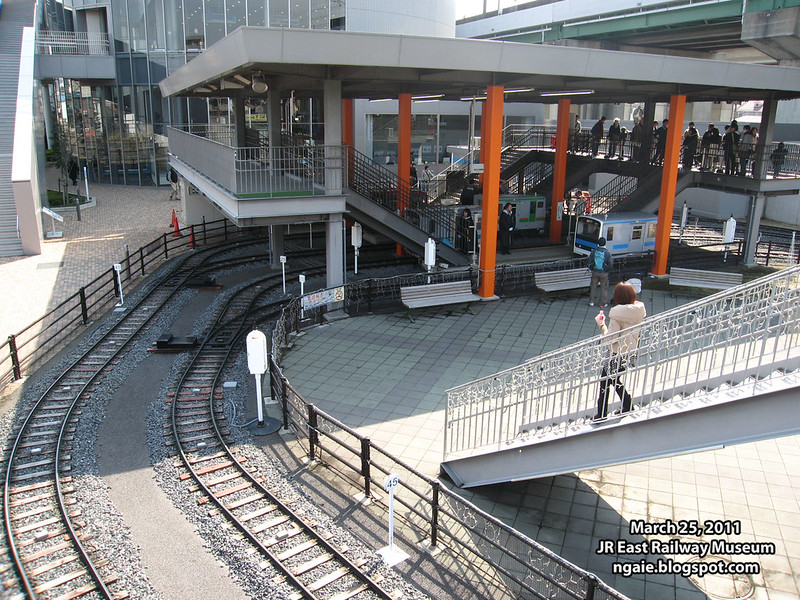

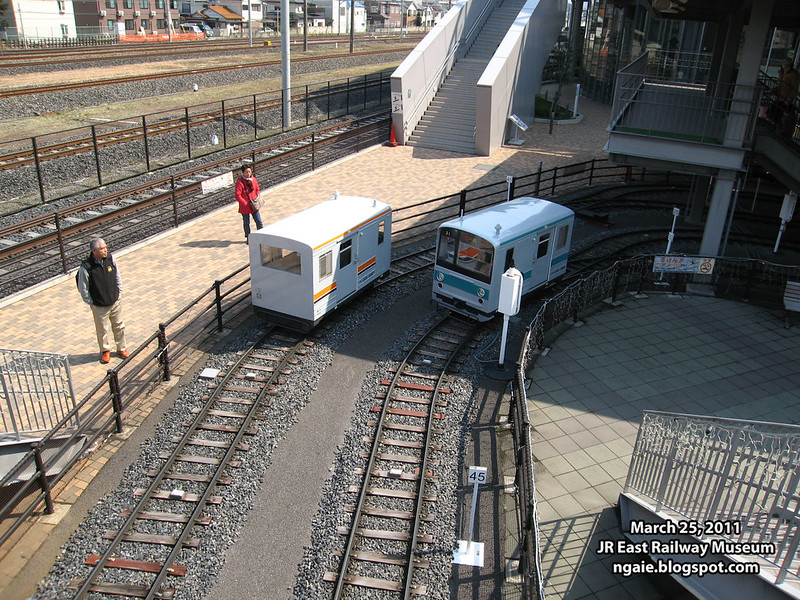
A view of the railway museum building.
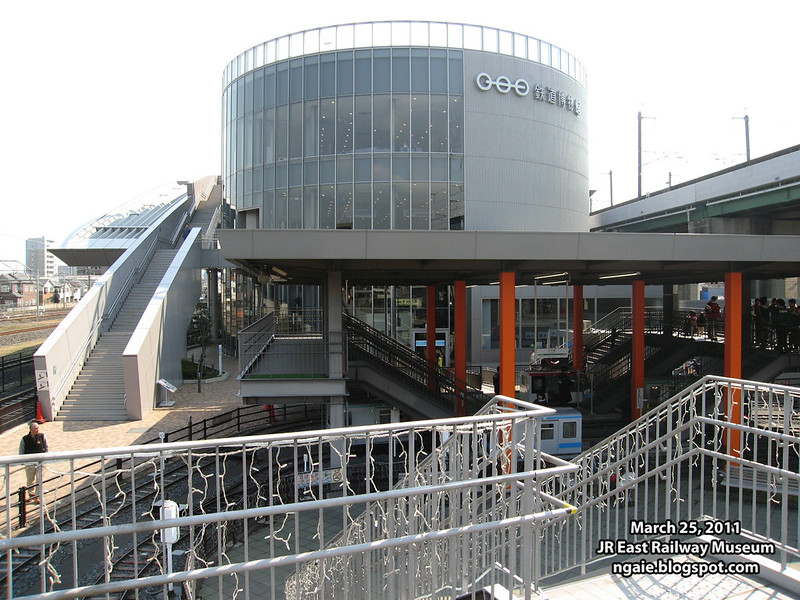
You can also buy "eki-ben" (駅弁), which are lunch bento boxes only sold in certain lines in Japan. Here you can buy some "exclusive" bento boxes that are not normally sold in Tokyo. The eki-ben are so popular that periodically, a department store will have an "eki-ben fair" where people can buy eki-bens that are usually only sold in certain railway lines all over Japan.
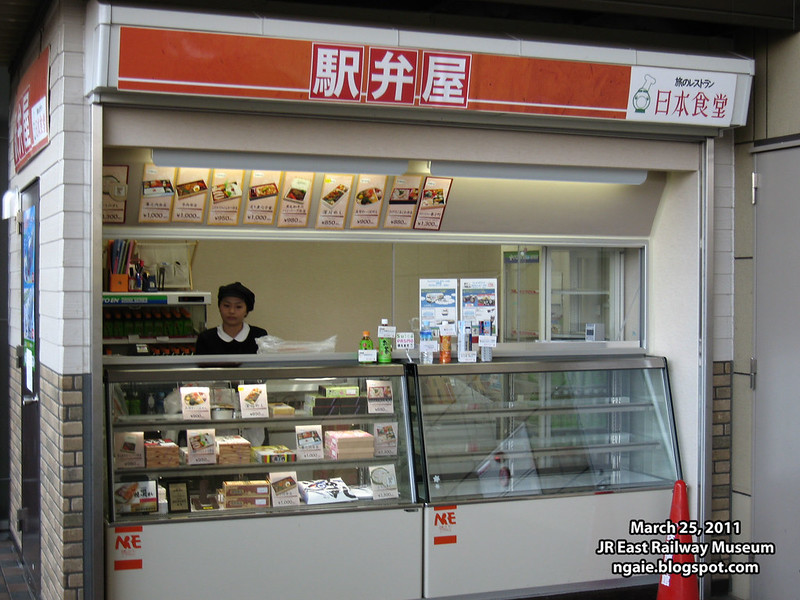
Where to eat an eki-ben after you have purchased it? Of course, inside a train!

Back in the museum, there were a number of full sized train simulators with the real controls where you can try out for free. These were really popular with the kids.
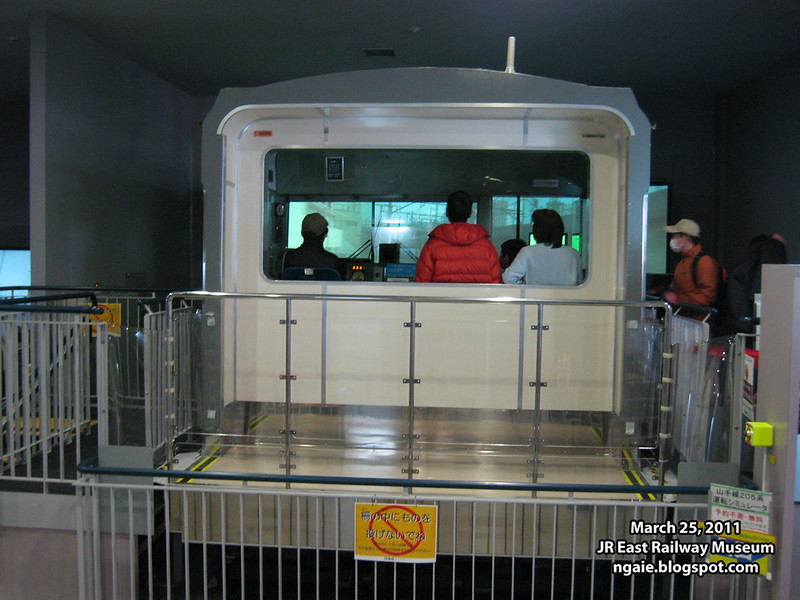
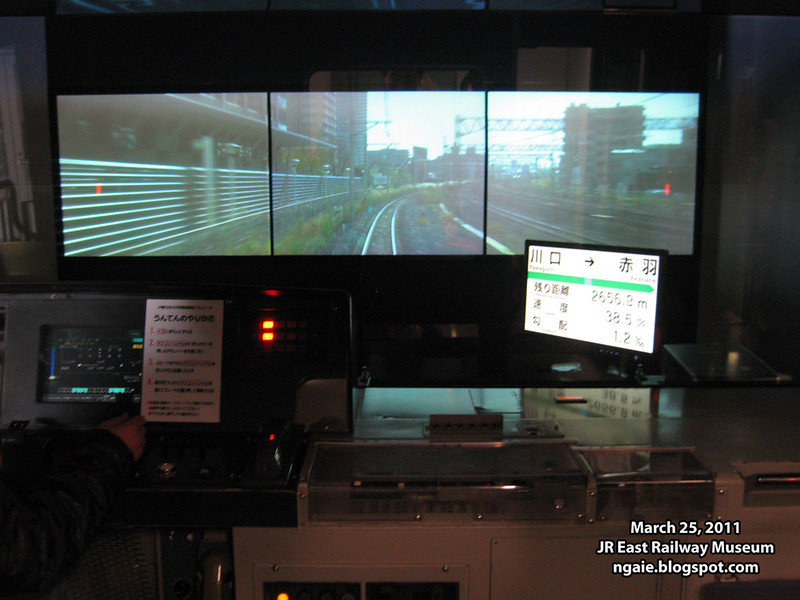

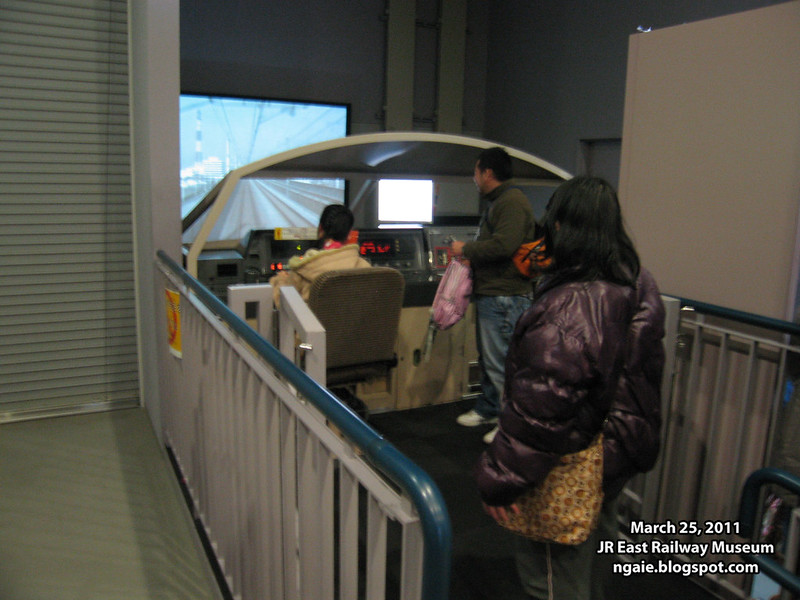
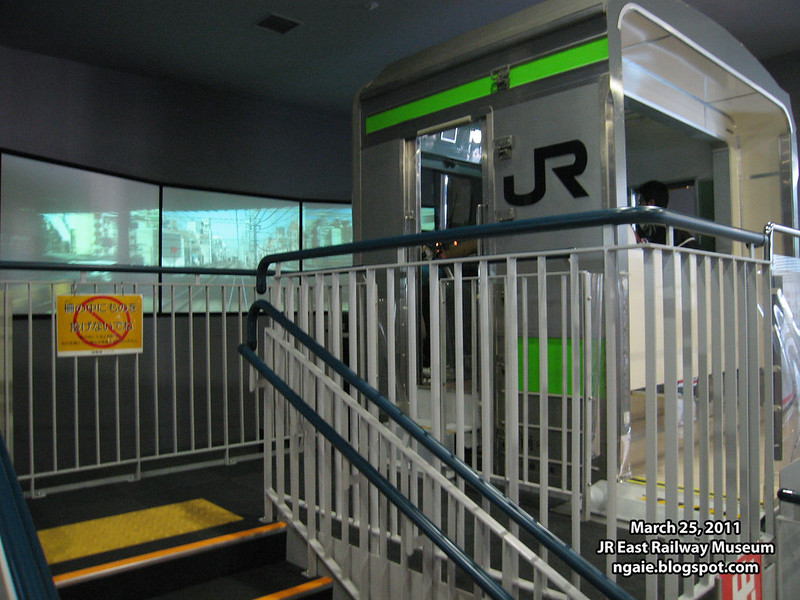
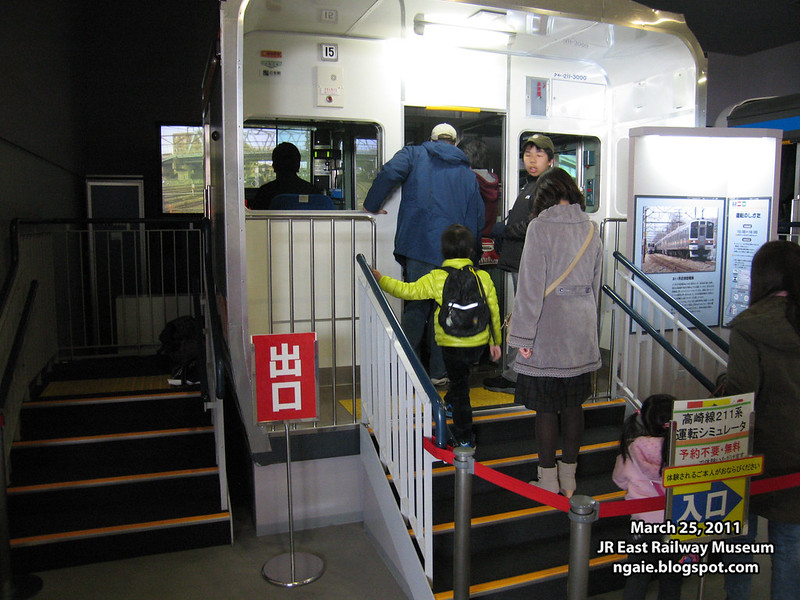
A view of the entrance and exit area with an actual train passing through outside.
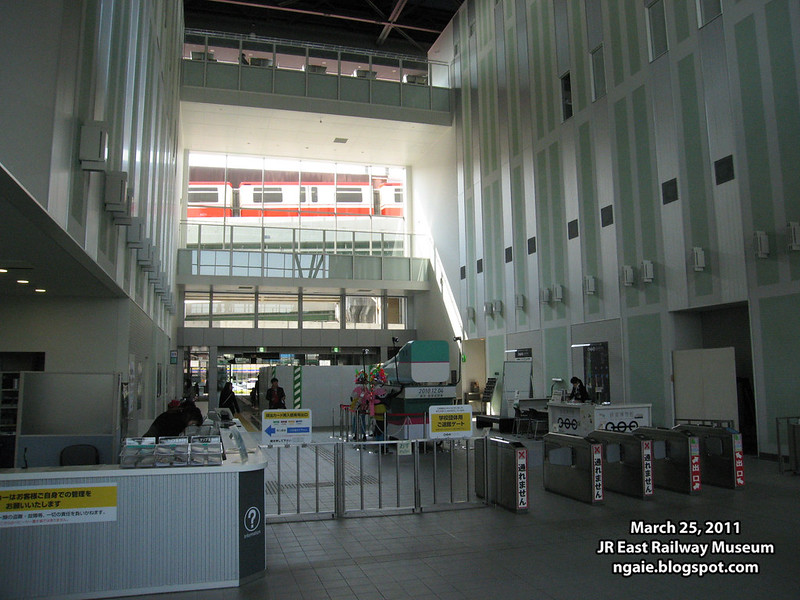
The last section of the museum was devoted entirely to the Tokaido Shinkansen, the world's first high speed rail line which opened in 1964.
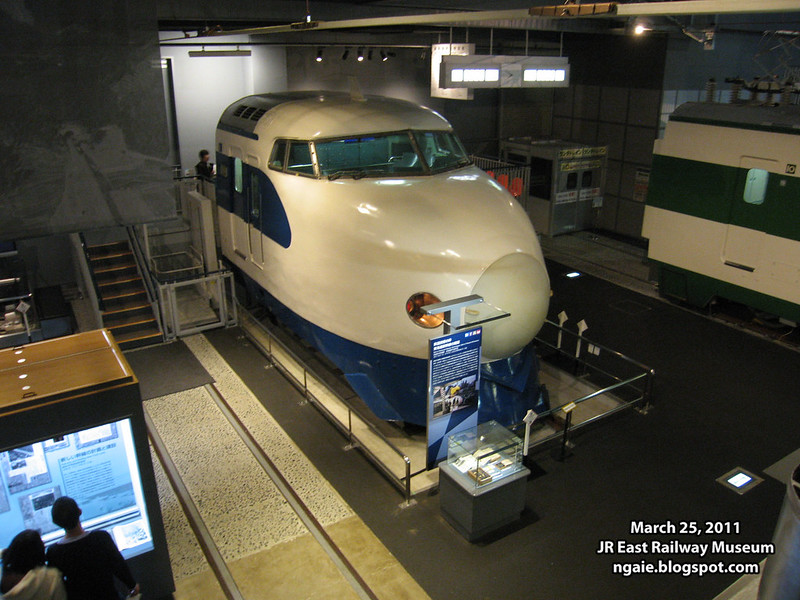

News articles, and brochures produced at the time.
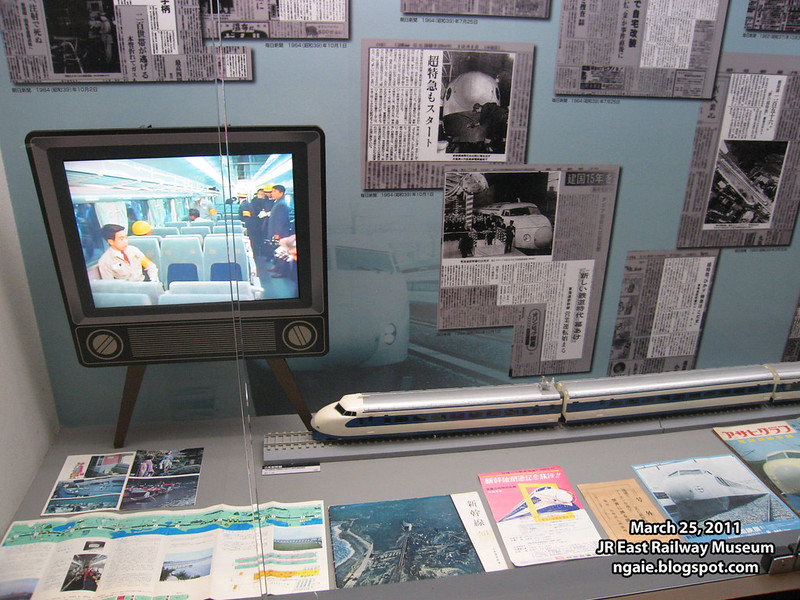
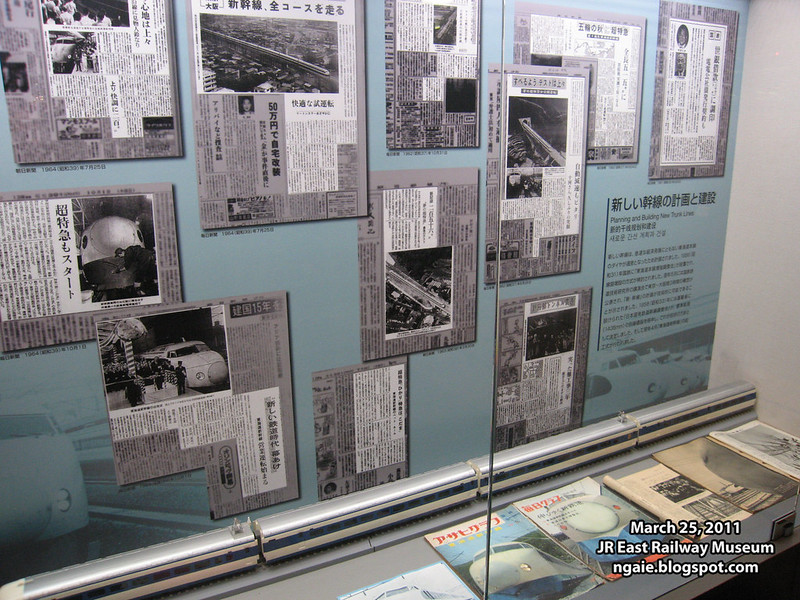
The control system.
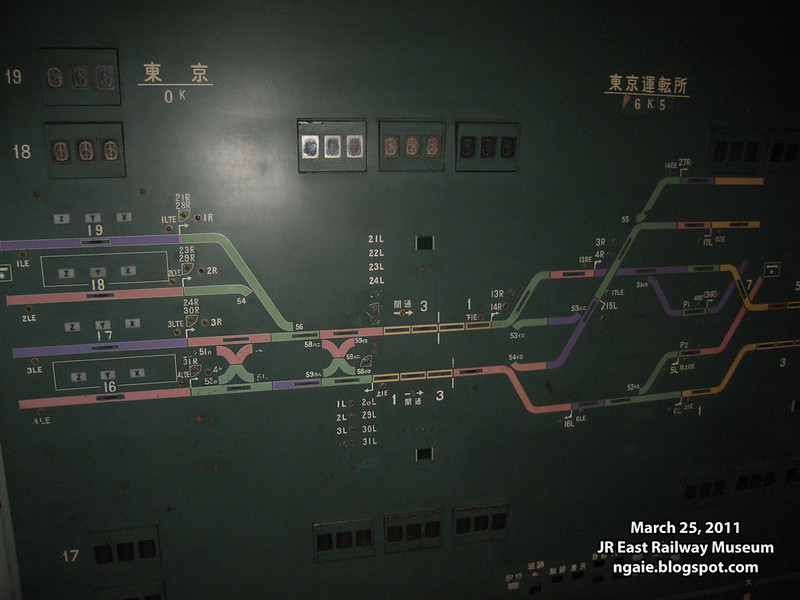
The inside of the actual train car that was used in 1964. The design was quite utilitarian, 3 + 2 seating to pack as many people as possible. Not much as changed on the train cars used in the Tokaido Shinkansen now except for the updated utilitarian design.
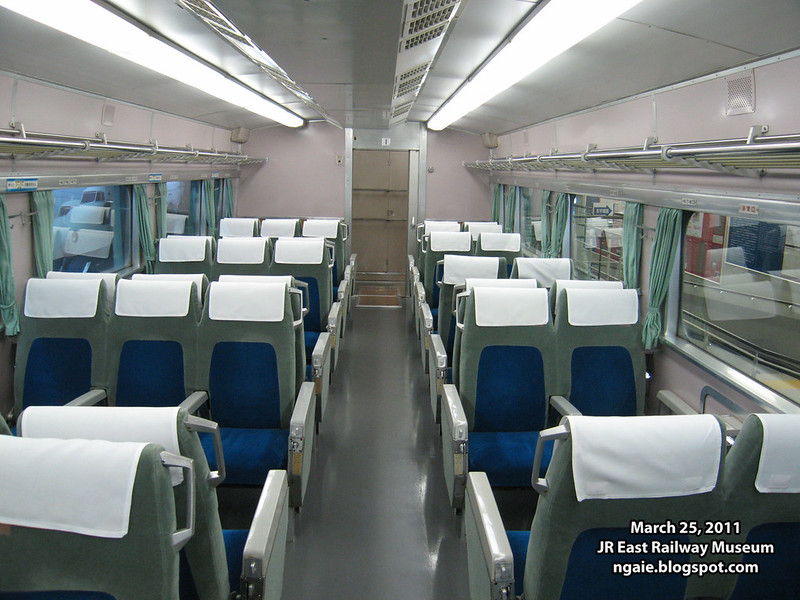
Explanation on why the Shinkansen stops in a station called Shin-Osaka in the middle of nowhere instead of at Osaka station in the centre of the city.
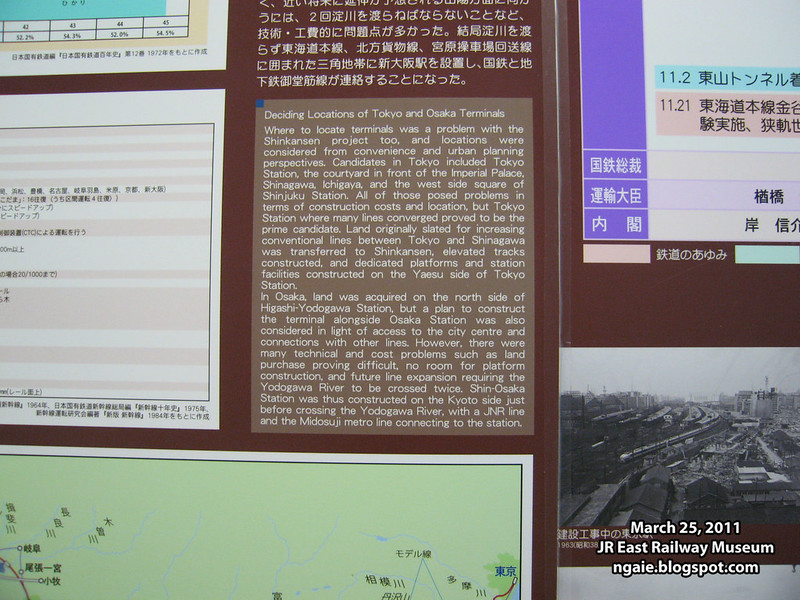
Back when Japan was still a developing country, the World Bank loaned money to build the Shinkansen. Now Japan is trying to export its Shinkansen technology to developing countries by giving out development aid loans...
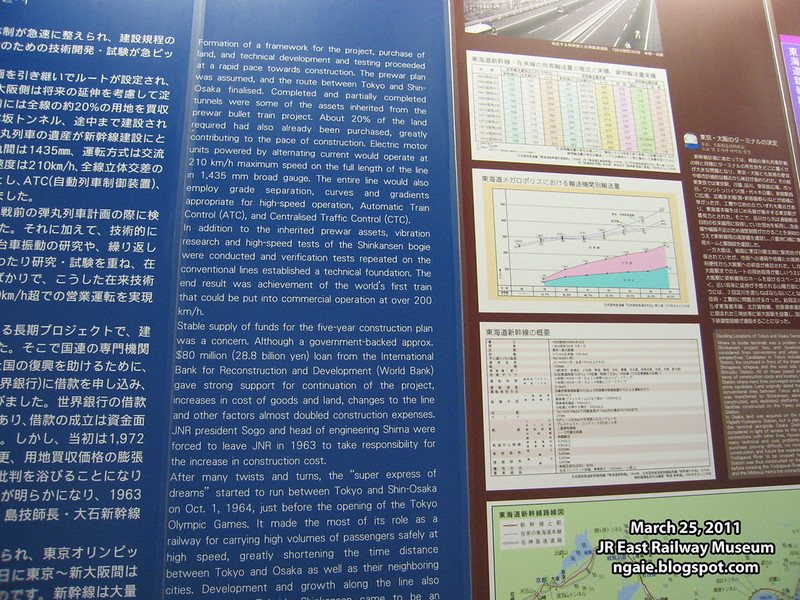
The 0-series train, the first high speed train in the world.
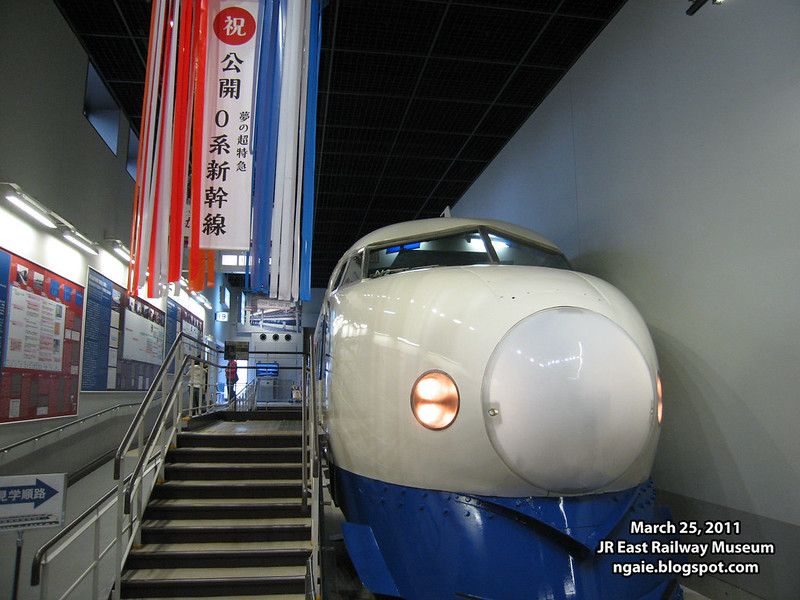
The evolution of the railway company logo. From the Japan National Railways era to the current privatized Japan Railways (JR) era.
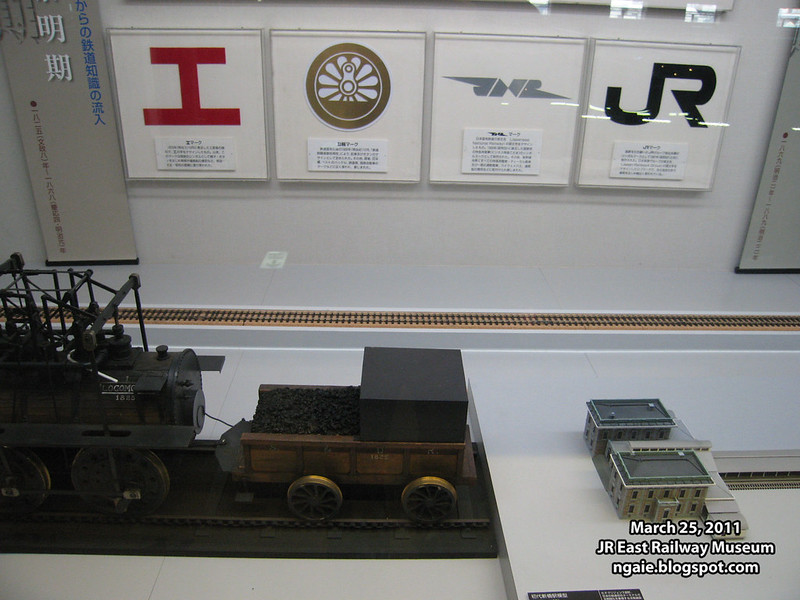
A model of the original Tokyo station.
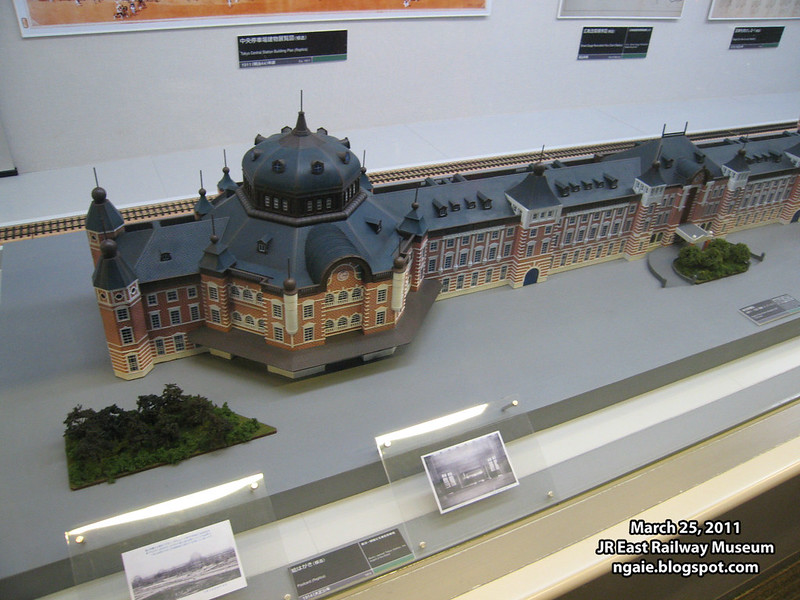
1987, the year Japan National Railways ceased to exist and Japan Railways started operations.
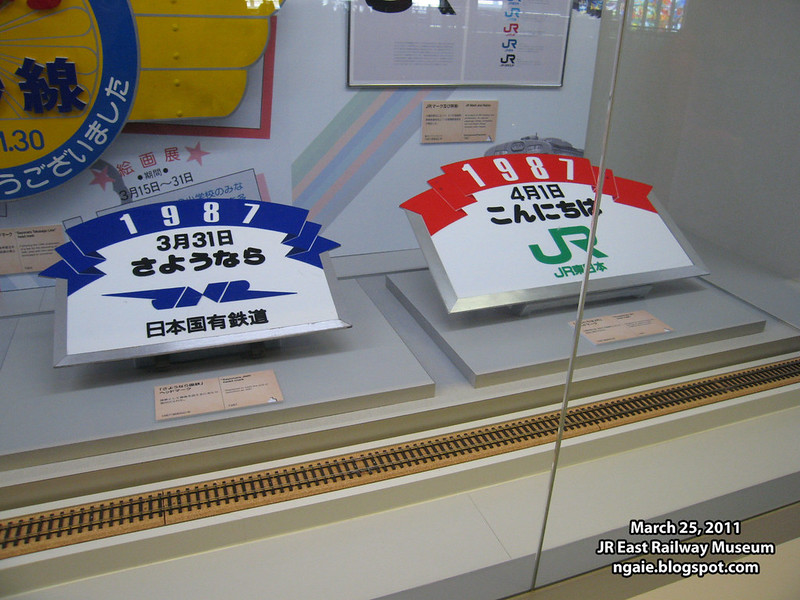
Another view of the cavernous museum.

One of the most impressive things was the model railway diorama they had. I think every hour or so, there was a 15 minute "show" where they would run the trains and turn on and off the lights to simulate day and night.
The railway model workshop. This must be a dream job for some people?
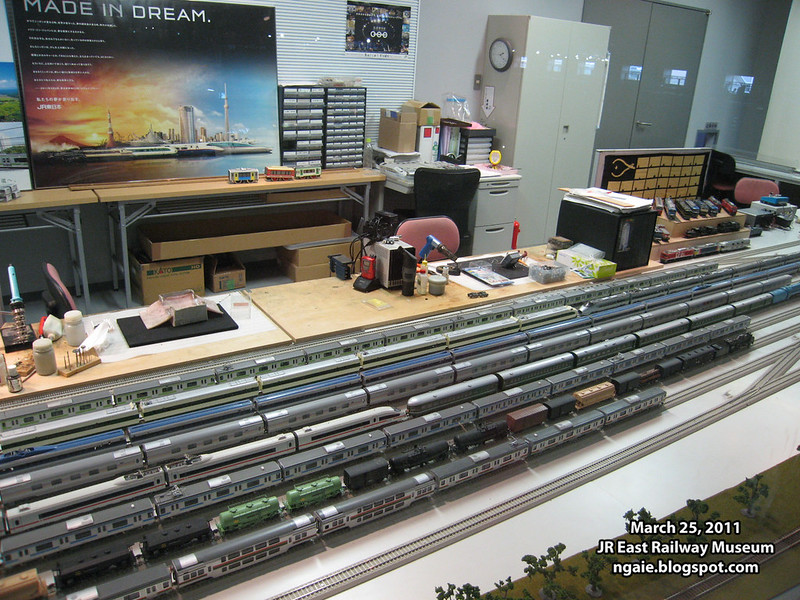
The gigantic diorama.
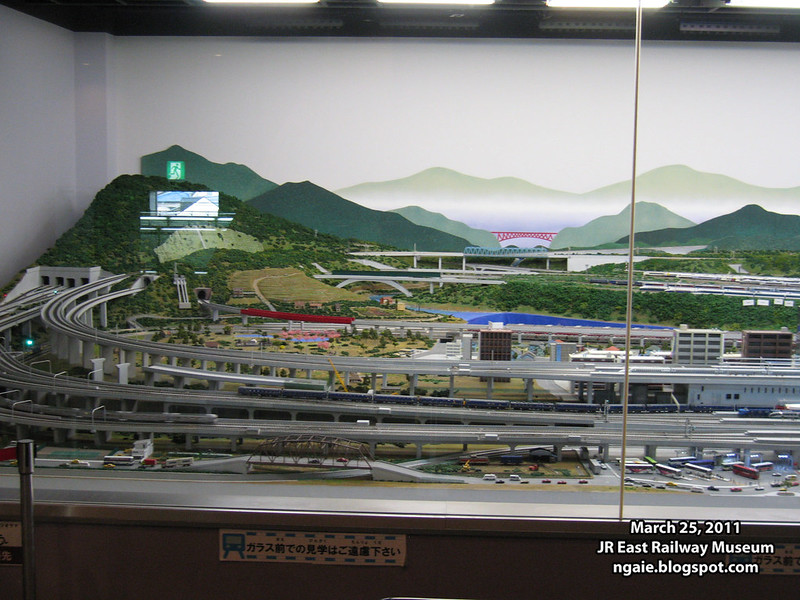
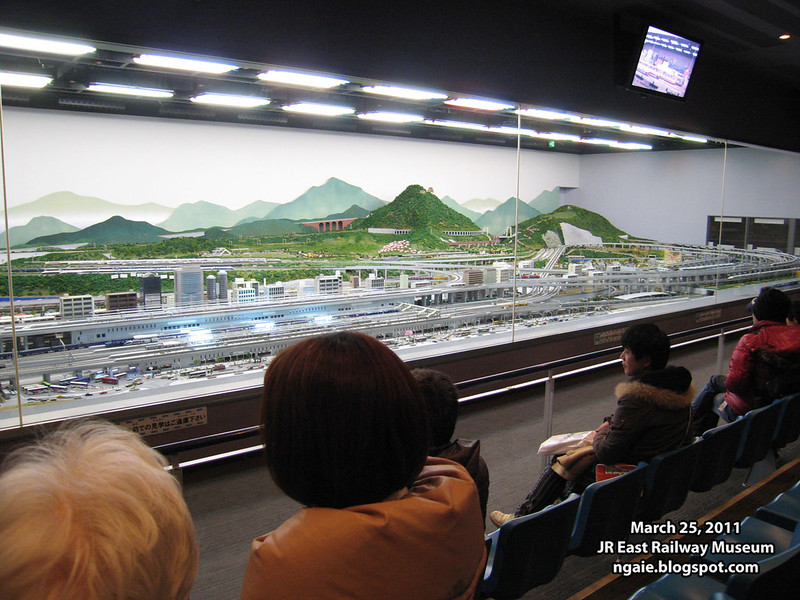
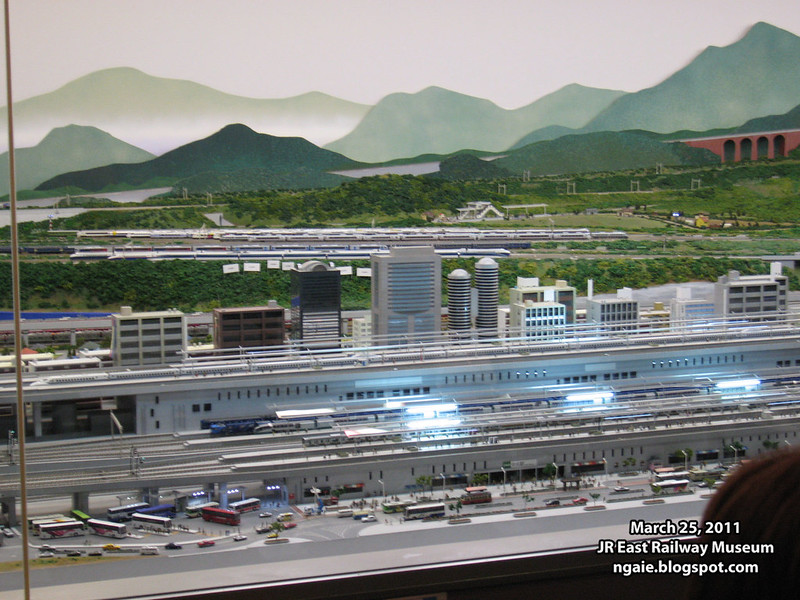

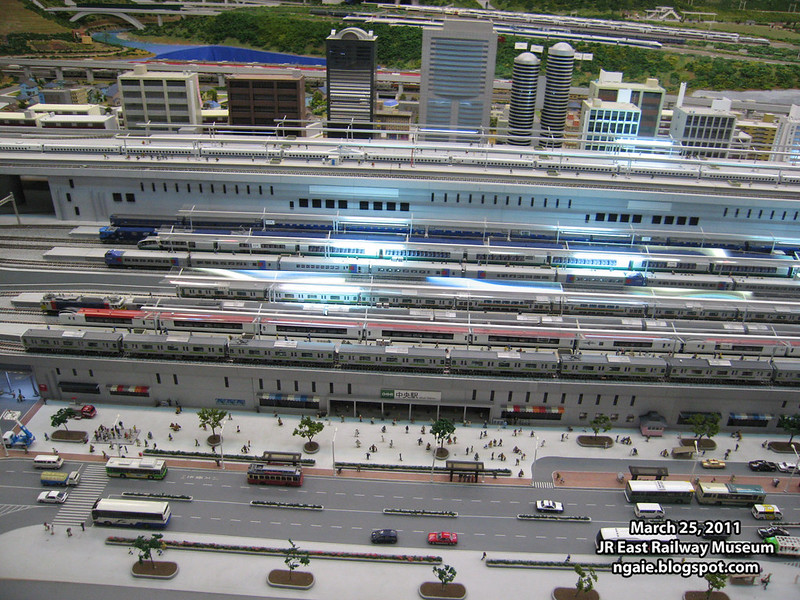
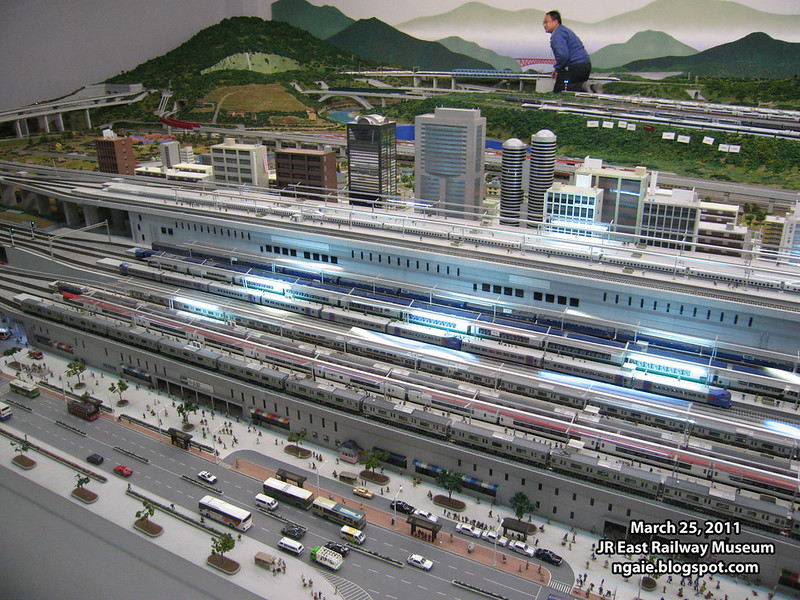
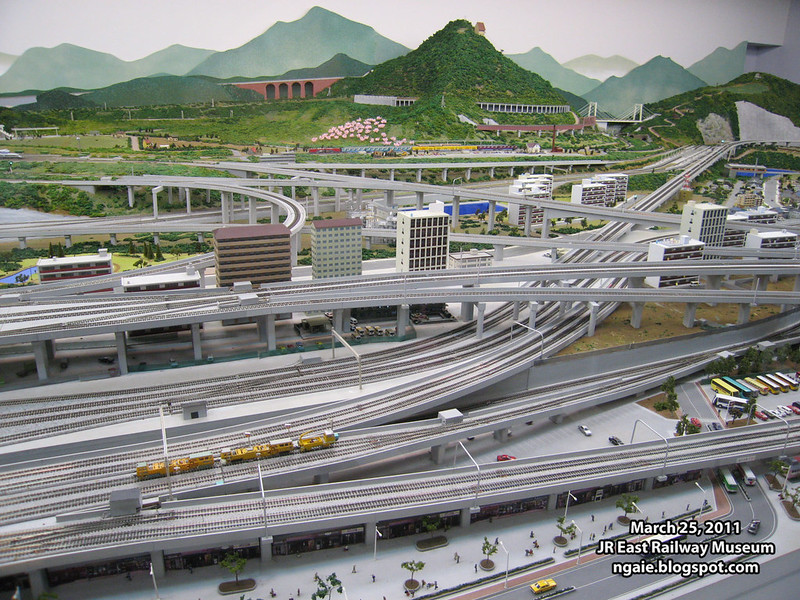
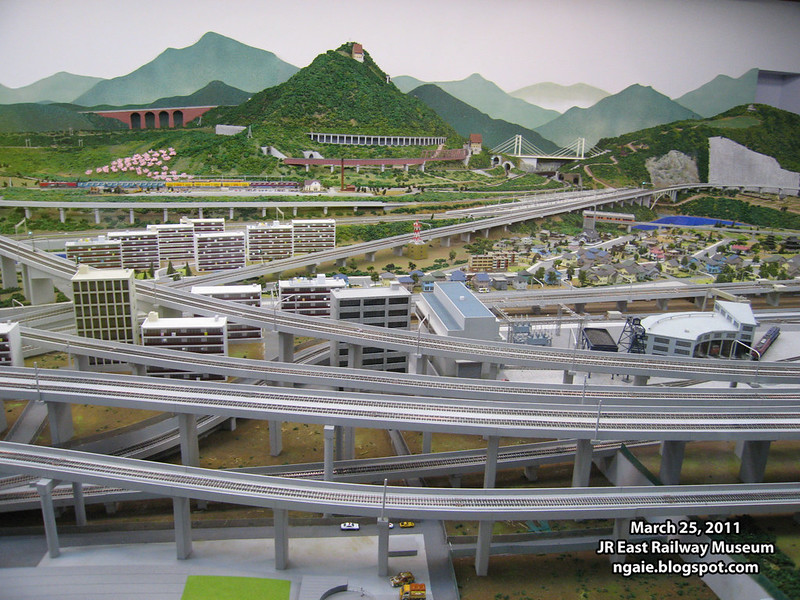

Stained glass window depicting railways.

View of the mini-railway course.

On the second floor, there was a viewing area where you could watch high speed Shinkansen trains passing through on their way up north.
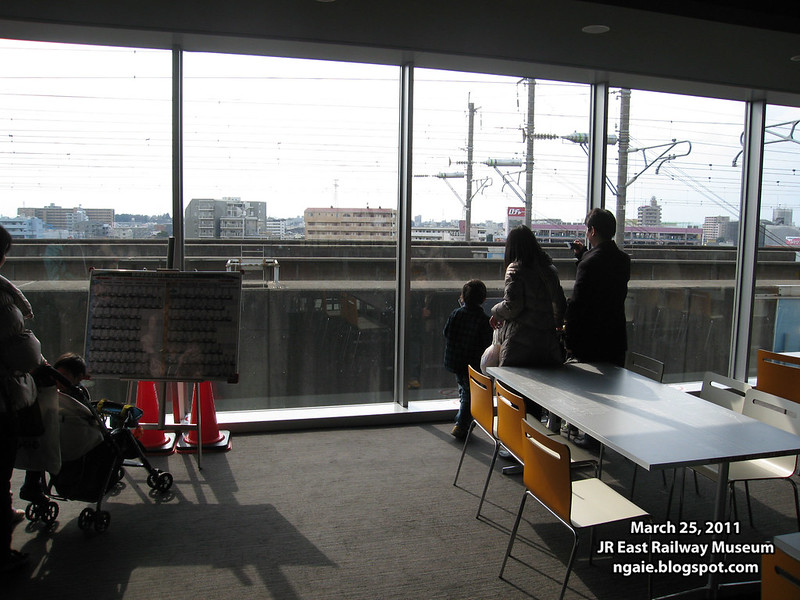
Unfortunately, my camera was not ready when it passed through.
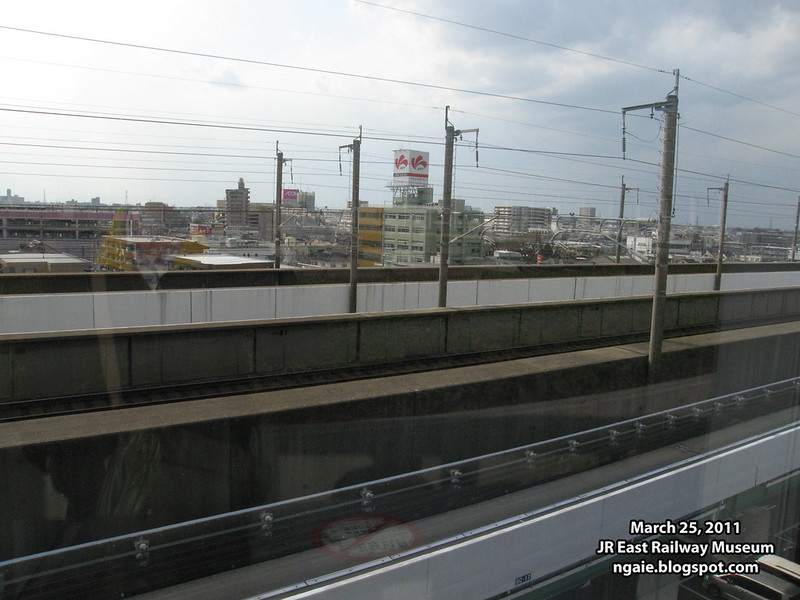

0 comments:
Post a Comment